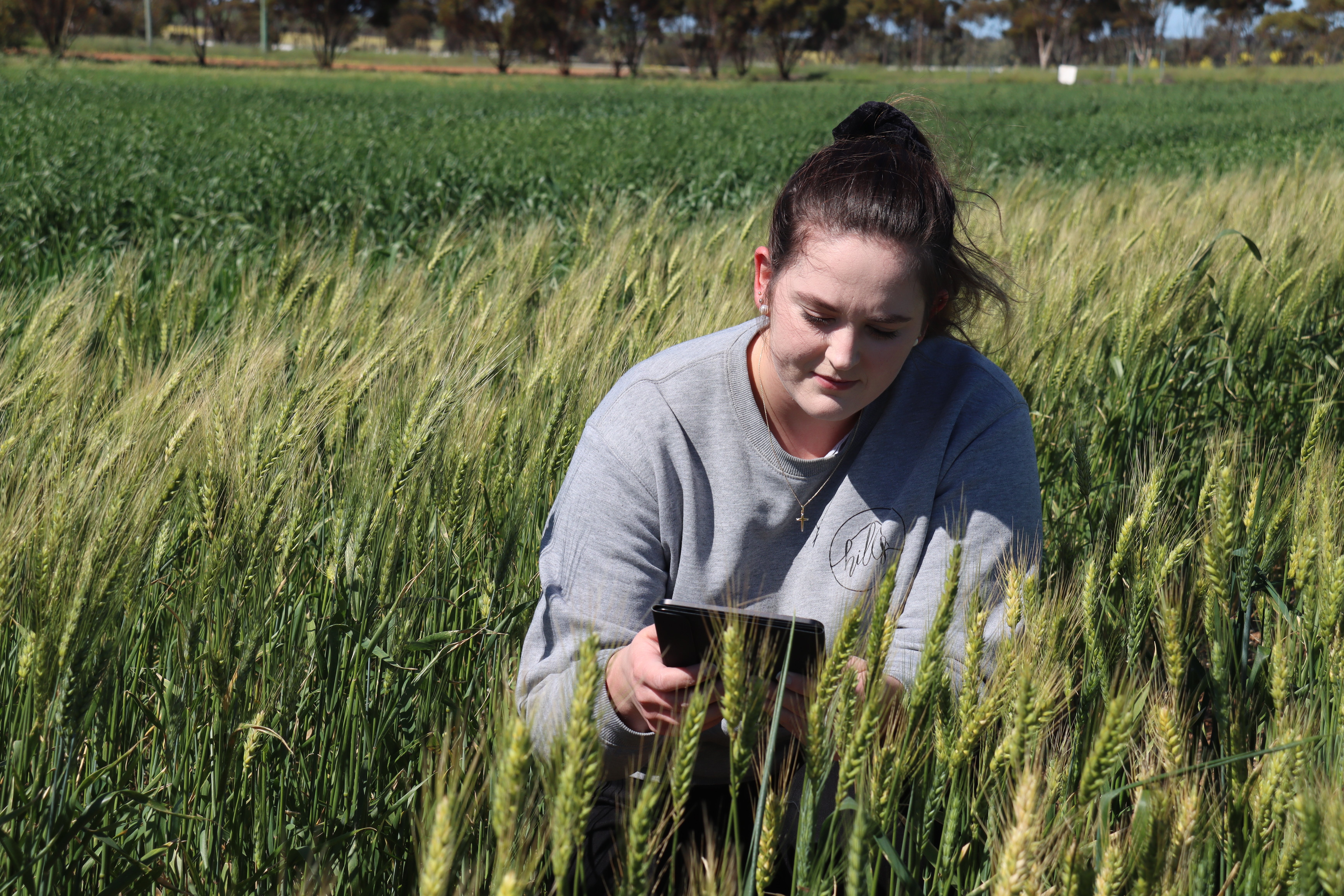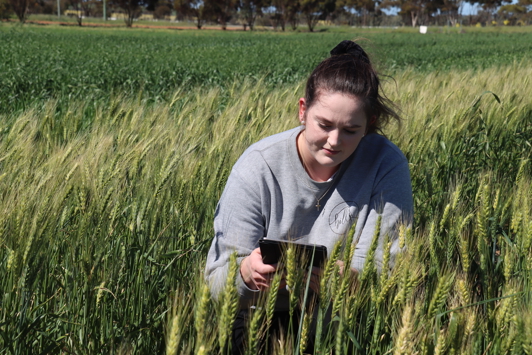Esperance Downs Research Station is located 30 km NNW from Esperance. Established in 1949, the research station covers 956 hectares (ha), comprised of 600 ha of arable land (sandy topsoils with ironstone gravel layers over a sandy clay subsoil) and 356 ha of non-arable (of which 125 ha is native vegetation).
The Esperance office was opened in 1989 and is located 10 km north of Esperance on the southern edge of Esperance sandplain soil.
Research
Esperance staff primarily work on applied grains research for broadacre crops in the region. The office supports department activities focusing on Indigenous economic development, fisheries and agriculture resource management and biosecurity.
Grains research projects are co-invested with funding organisations such as the Grains Research and Development Corporation (GRDC). Research at Esperance Downs Research Station is focused on the agronomy and pathology of wheat, barley, canola, and pulses, and soil amelioration to improve water use efficiency and nutrient availability on problematic soils.
Past research includes a saltland rehabilitation program (surface water management, groundwater drainage, planting of native trees, shrubs, saltbush, and perennial grasses) to halt and reverse salinity on the research station.
Current research projects are focused on but not limited to:
- management systems for sandplain soils with multiple constraints (water repellence, compaction, acidity)
- long term effects of deep placed organic amendments and lime on soil nutrition, compaction, and crop yields
- time of sowing trials for different grains
- pre-harvest sprouting of wheat
- crop pest and disease management
- nitrogen cycling and losses
- evaluation of novel systems to reduce soil evaporation in sodic clay soils (mineral mulches, in-furrow gypsum, deep tillage without delving)
- re-engineering calcareous clay soils (located in Salmon Gums)
- changes in herbicide efficacy due to inversion tillage in sandplain soils
- faba bean and chickpea breeding evaluation lines.

Facilities
Esperance Downs Research Station
The Esperance Downs Research Station is the major site for Esperance sandplain field trials.
Our Field Research Operations team provides research support to the department and external clients including grower groups, universities, private companies across the southeast, servicing all of the Esperance shire from Beaumont (east) to Kumarl (north of Salmon Gums) to Ravensthorpe (south west).
Facilities at the research station include the following:
- capacity for crop, pasture and livestock research and development (R&D)
- office building with tearoom, and office accommodation for 6 staff
- barn with seed preparation facilities (repurposed in spring for the facility’s annual field day)
- sheds for vehicles, machinery, and hay storage
- machinery workshop
- fertiliser bunker and grain silos
- chemical shed and washdown facilities
- shearing shed and attached sheep yards, as well as separate cattle yards
- staff house
- water supplied from 4 dams with improved catchments, overhead stand at barn, and chemical shed
- commercial cropping tractors, seeders, and sprayers
- mobile plot irrigator
- precision plot seeders and harvesters
- fertiliser applicators to suit a variety of applications
- Esperance Mallee satellite research sites at Grass Patch and Wittenoom Hills
- trials seeking specific conditions are located on farms within 100 km of the research station.
Esperance office
The Esperance office site is made up of 58 ha, with 32 ha or arable land that is leased. Buildings, sheds, and offices are located on 4 ha of land.
The office facilities include plant, grain, and soil laboratories, including:
- soil labs, soil drying ovens, storage facilities
- grain labs with grain quality testing equipment, NIR, falling numbers analyser, plant drying ovens, cool room, storage facilities, threshing room and equipment
- animal lab with microscope, fridge, freezer and storage facilities. Adjacent animal shed with sheep yards.
- rainfall simulator for grain quality research.
- 2 glass houses
- shed with pallet racking and forklift access
- secure aviary capable of holding 300 birds
- biosecurity workshop
- small meeting room with video conferencing facilities for up to 11 people, and mapping room
- large conference room for up to 35 people with kitchen and audio-visual facilities.
- offices to accommodate 35 staff
Co-locators
- South East Premium Wheat Growers’ Association (SEPWA)
- Association for Sheep Husbandry, Excellence, Evaluation and Production (ASHEEP).
Contact us
-
Esperance Downs Research StationLot 644 and 651 (PO Box 57)
Gibson WA 6448

